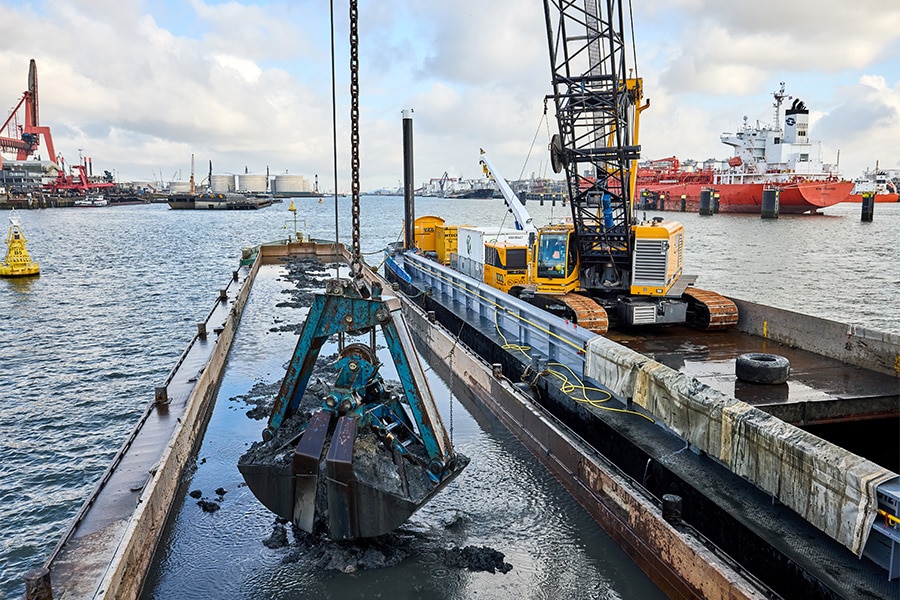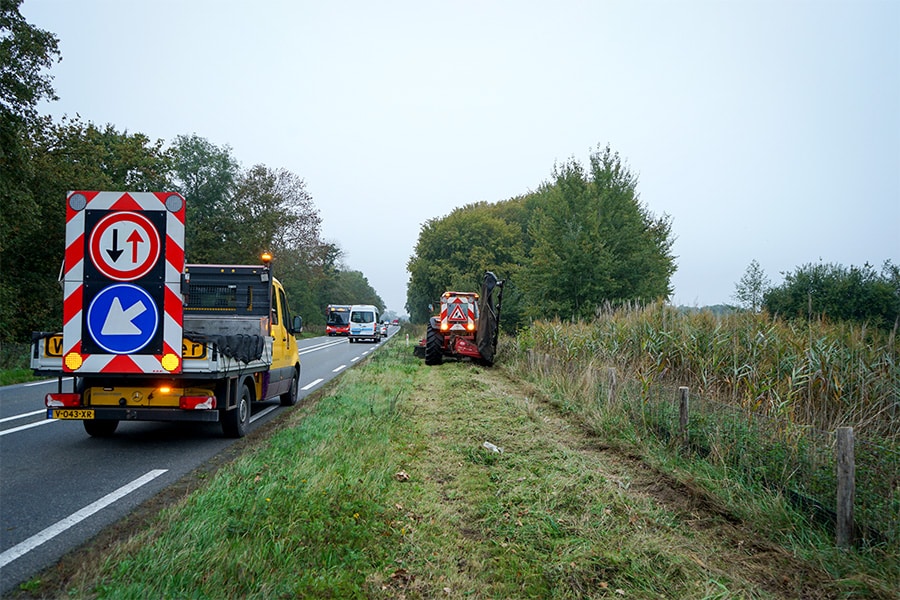
Dredging on different energy sources
During a dredging pilot in Rotterdam's Geulhaven, the Port Authority, in cooperation with Verboon Maasland, compared the efficiency of three different energy sources with respect to CO2 and nitrogen emissions, productivity and costs. The main player was a 100-ton electric wire crane powered by alternating battery packs, a hydrogen fuel cell and a diesel generator. Although an official report is still being prepared, Tom Maaskant, project leader at Verboon Maasland, already shares the most important insights. And these are quite surprising.
The Port of Rotterdam Authority is responsible for keeping berths and waterways in the Rotterdam port area at the right depth, and its ambition is to do so in the most sustainable way possible. "For this to happen, the sector does need to be able to gain experience," says Maaskant. "After a fellow company had previously conducted a pilot with hydrogen-powered dredging in the Port of Rotterdam, we investigated the efficiency of three different energy sources for dredging and earthmoving activities. The results of the pilot contribute to more knowledge about sustainable dredging methods. Our electric wire crane lends itself perfectly to such a pilot because it can be powered by different energy sources."
Emission-free
Verboon Maasland ordered the electric wire crane in 2021. "Emission-free work was still fairly in its infancy at the time and was not as booming as it is now. We therefore made the choice for an electric crane with its own generator. The idea behind this was that we could independently drive the crane off the flatbed trailer and run it anytime, anywhere," Maaskant explains. "At the same time, this concept gives us such flexibility that we can use virtually any energy source with an eye to the future. The crane was finally delivered in 2023 and has run mainly on diesel since then. With this pilot in the Port of Rotterdam, we are bringing the sustainable potential of our crane a bit more into the limelight."

Pure results
For two months, Verboon Maasland's electric wire crane was used for this pilot. "All three power sources were tested during that period, where we really measured everything relevant to measure," says Maaskant. "All environmental factors were also equalized for a clean result. In addition, we tackled the challenges around working with hydrogen on the front end. It's a bit more complicated in terms of laws and regulations, but we got hands-on with our supplier Genpower on that. In addition to the reports, we also made the MKI calculations afterwards of the combination used based on the real figures."
No hydraulics on board
And the results of the pilot? Maaskant: "Based on the average diesel consumption, we expected a certain consumption standard. The beauty of our wire crane is that there are no hydraulics on board. Compared to a hydraulic crane with the same bucket, our wire crane consumes only 25 percent of that. On power, regardless of the feed. So with sustainability and "the new way of working" in mind, it's also important to look at what type of machine you use for what job. If we then look at the efficiencies, the diesel generator scores 35 percent, the fuel cell 39 percent and the battery 71 percent. With the latter, we had a much higher expectation because you don't have to convert the energy anymore. Now a lot of energy was lost in the 24-Volt system."
Run 300 hours
According to Maaskant, the battery was the most severely disappointing, although he still expects efficiency improvements with a different type of battery. "Also, the efficiency of our hydrogen-powered configuration can further increase. We have now worked with two generators because of the peak power required, but we can also accommodate that with a small battery on one generator. Furthermore, with our hydrogen configuration you can run for more than 300 hours, while with the largest battery on the market you can run for a maximum of 87 hours. That makes hydrogen cost-effectively the most attractive alternative for off-grid zero-emission applications."
Toward the end of the pilot, Verboon Maasland held a market day for 125 fellow contractors. "The aim was to show what is possible and what experiences we have gained. After all, you don't do sustainability alone; the challenge is far too great for that. You have to help each other," Maaskant concludes. Verboon Maasland is currently finalizing a comprehensive report on the pilot that will also be shared with the market. Moreover, the company is already looking for a client for another pilot project with an electric cutter suction dredger.




